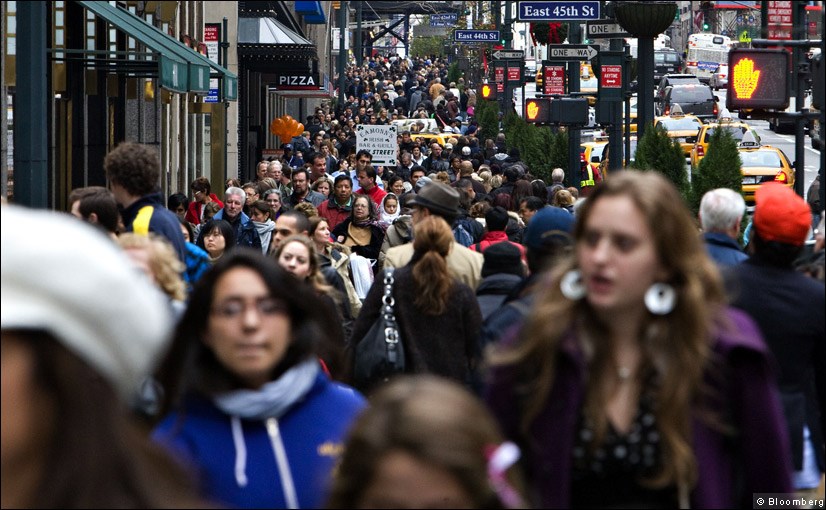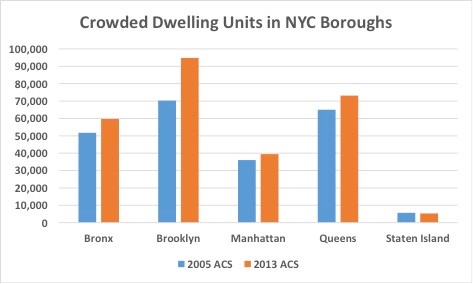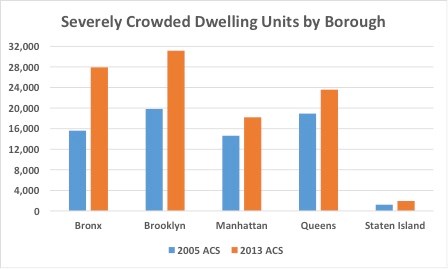
More than one in twelve dwellings in New York City are considered "crowded," according to a report released on Monday by New York City Comptroller Scott M. Stringer.
The report, entitled, "Hidden Households," found that the problem of crowding is stubbornly increasing, with nearly 1.5 million New Yorkers living in a crowded or severely crowded home, at a ratio of 5.42 persons per crowded household.
The data, gathered between the years of 2005 and 2013, also found that the borough of Brooklyn showed the biggest jump in the number of crowded dwellings, an increase of 28 percent.
The reason crowding is an issue for all New Yorkers, even if they are not living in a crowded dwelling, is because crowding is an established predictor of homelessness and a critical indicator of negative health, safety and economic well-being of a city overall.
"Studies make it clear that crowding hurts the whole family," said Comptroller Stringer. "It makes it harder for kids to learn and puts the entire family at a greater risk of homelessness. In response, the City must elevate crowding as a key housing priority to be addressed, while at the same time creating more affordable housing."
The report's findings were culled using microdata from the U.S. Census Bureau's annual American Community Survey to examine trends in both rental and privately-owned housing between 2005 and 2013. The report breaks down the problem of crowding into two tiers: crowded dwellings (units with more than 1 person per room) and severely crowded dwellings (a subset of crowded dwellings where units have more than 1.5 persons per room).
Crowded Dwellings
Between 2005 and 2013, the citywide proportion of crowded dwellings increased by 15.8 percent.
- In Brooklyn, the proportion of crowded dwellings increased by 28.1 percent.
- In Queens, the proportion of crowded dwellings increased by 12.5 percent.
- In The Bronx, the proportion of crowded dwellings increased by 12.3 percent.
- In Manhattan, the proportion of crowded dwellings increased by 10.1 percent.
- In Staten Island, the proportion of crowded dwellings actually decreased by 8.6 percent.

Severely Crowded Dwellings
Between 2005 and 2013, the citywide proportion of severely crowded dwellings increased by 44.8 percent.
- In The Bronx, the proportion of severely crowded dwellings increased by 74.2 percent.
- In Staten Island, the proportion of severely crowded dwellings increased by 53.5 percent.
- In Brooklyn, the proportion of severely crowded dwellings increased by 49.1 percent.
- In Manhattan, the proportion of severely crowded dwellings increased by 25.5 percent.
- In Queens, the proportion of severely crowded dwellings increased by 24.9 percent.

The report also explores crowding along income lines, revealing that the crowding issue exists across the earning spectrum:
Households earning less than $22,000 a year constitute:
- 23.6% of crowded dwellings.
- 24.9% of severely crowded dwellings.
Households earning at least $100,000 a year constitute:
- 18.5% of crowded dwellings.
- 16.4% of severely crowded dwellings.
Households earning at least $170,000 a year constitute:
- 5.2% of crowded dwellings.
- 4.6% of severely crowded dwellings.
The report also cross examines crowding across households with children, studio apartments, renters' countries of origin, and other factors.
The Comptroller's office gave recommendations for the Department of Health, the Department of Homeless Services and for the City overall, including forming a working group of housing, buildings, and public safety experts to devise a strategy that would mitigate potential hazards related to fires, available shelter, hygiene and mental health.
To read the full report, click here.



